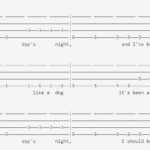Are you struggling to hit those perfect streaks in Guitar Hero on your Xbox 360? You’re not alone. Many players have discovered a surprising truth: that shiny new HDTV might actually be hindering your performance compared to an older standard definition television. For players dedicated to mastering tracks like “Through the Fire and Flames” on their Guitar Hero Guitar For Xbox 360, the display you use can make a significant difference.
The Lag Factor: HDTVs vs. Standard Definition TVs for Guitar Hero
The author of the original post found themselves in this exact situation. After countless attempts to improve their scores on an HDTV, they noticed something was off. Even with calibration settings tweaked, fast strumming felt inconsistent, and rhythm was easily disrupted. Frustrated, they switched back to a standard definition TV and the results were immediate and dramatic. Their scores skyrocketed, jumping from an average of 480k on “TTFaF” to a consistent 600k, with potential for even higher scores. This wasn’t just a psychological effect; the tangible improvement pointed to a real technical issue: input lag.
Input lag, the delay between your actions (like strumming on your guitar hero guitar for xbox 360) and seeing the response on screen, is a well-known problem with HDTVs. While often imperceptible in casual viewing, it becomes critical in fast-paced rhythm games like Guitar Hero. Even milliseconds of lag can throw off your timing, making perfect note hits elusive and high scores harder to achieve. The author also noted a similar issue in Halo 3, where aiming accuracy suffered on the HDTV due to the need for constant lag adjustment.
Understanding and Mitigating HDTV Lag
So, what causes this lag in HDTVs? The original article points to two primary culprits:
-
Image Enhancement Technologies: HDTVs often employ various processing techniques to enhance picture quality, such as smoothing, sharpening, and noise reduction. These processes, while visually appealing for movies and TV shows, add processing time and contribute to input lag.
-
Resolution Upscaling/Downscaling: Modern HDTVs have a native resolution, and when displaying content from older consoles like the Xbox 360, which often output at lower resolutions, the TV needs to upscale or downscale the image to fit the screen. This scaling process also introduces lag.
Fortunately, there are potential solutions to minimize HDTV lag and improve your Guitar Hero experience on your guitar hero guitar for xbox 360:
-
Disable Image Enhancement Settings: Most HDTVs allow you to turn off image enhancement features. Look for settings like “noise reduction,” “motion smoothing,” or “dynamic contrast” in your TV’s picture settings and disable them. Many TVs also have a “Game Mode” which automatically disables many of these processing features for reduced lag.
-
VGA Cable and Native Resolution: The original author suggests using a VGA cable to connect your Xbox 360 to your HDTV. VGA connections often offer more resolution options, allowing you to potentially match your Xbox 360’s output resolution to your TV’s native resolution (e.g., 720p TVs often have a native resolution of 1366×768). By eliminating the need for upscaling or downscaling, you can potentially reduce lag.
Experiment and Find Your Optimal Setup
While the author hasn’t personally tested the VGA cable solution, it presents a promising avenue for reducing HDTV lag and getting the most out of your guitar hero guitar for xbox 360 gameplay. The key takeaway is to be aware of input lag and how it can impact rhythm games. Experiment with your HDTV’s settings, try “Game Mode,” and consider a VGA connection to see if it improves your Guitar Hero scores. You might be surprised at how much of a difference it makes and finally unleash your true Guitar Hero potential.

